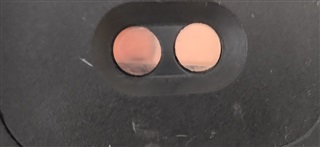Other Parts Discussed in Thread: OPT3101
I have performed the calibration step INLAB_STEP_1 -> dev.calibrationSession_firstTimeBringUp();
As far as I know, this step performs the calibration.
* Internal electrical crosstalk
* Offset Illumination crosstalk
*Phase Offset
I have managed to carry out this step. I have significant mm distance measurements. There is still a percentage of error, but I think it is due to my calibration tools.
Regarding my results I have some questions:
1- Should the same OPT3101 configuration be used to calibrate as for field operation mode. For example, if I calibrate with an OPT3101 configuration in AutoHDR mode as it comes in the SDK (OPT3101_configuration.cpp), in my application I configure OPT3101 in SuperHDR or monoshot mode as long as I load the records with the calibration values, will the behavior be the same?
2- Does this calibration constitute the factory calibration that must be carried out for each OPT3101 PCB, what are the consequences of not doing it for each unit, that is, using the same calibration values for my entire production batch?
3- My OPT3101 PCB design will be inside a case covered as shown in the image and with a coverglass, my question here is should this calibration be carried out with the PCB module mounted in the case or is it better to have the PCB discovered online production ?


